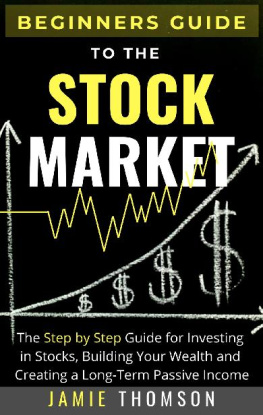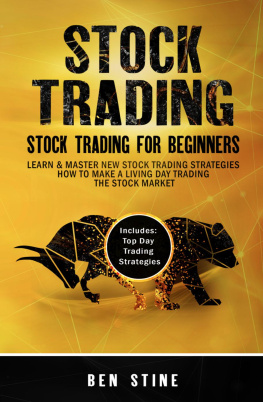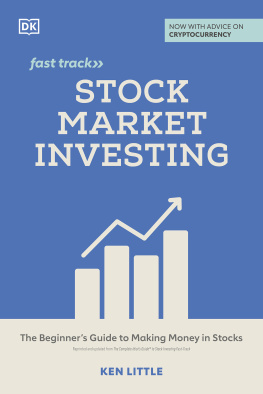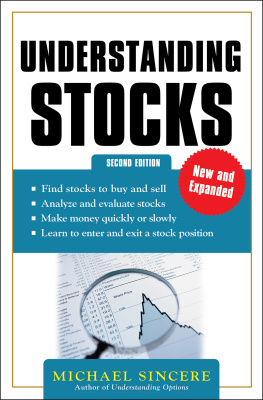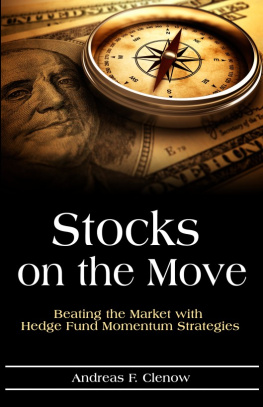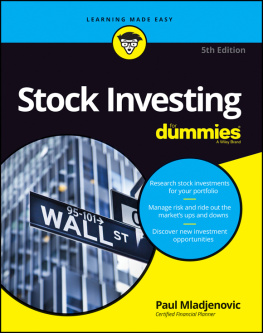Jeremy J. Siegel - Stocks for the Long Run 5/E: The Definitive Guide to Financial Market Returns & Long-Term Investment Strategies
Here you can read online Jeremy J. Siegel - Stocks for the Long Run 5/E: The Definitive Guide to Financial Market Returns & Long-Term Investment Strategies full text of the book (entire story) in english for free. Download pdf and epub, get meaning, cover and reviews about this ebook. year: 2014, publisher: McGraw-Hill Education, genre: Business. Description of the work, (preface) as well as reviews are available. Best literature library LitArk.com created for fans of good reading and offers a wide selection of genres:
Romance novel
Science fiction
Adventure
Detective
Science
History
Home and family
Prose
Art
Politics
Computer
Non-fiction
Religion
Business
Children
Humor
Choose a favorite category and find really read worthwhile books. Enjoy immersion in the world of imagination, feel the emotions of the characters or learn something new for yourself, make an fascinating discovery.

- Book:Stocks for the Long Run 5/E: The Definitive Guide to Financial Market Returns & Long-Term Investment Strategies
- Author:
- Publisher:McGraw-Hill Education
- Genre:
- Year:2014
- Rating:4 / 5
- Favourites:Add to favourites
- Your mark:
Stocks for the Long Run 5/E: The Definitive Guide to Financial Market Returns & Long-Term Investment Strategies: summary, description and annotation
We offer to read an annotation, description, summary or preface (depends on what the author of the book "Stocks for the Long Run 5/E: The Definitive Guide to Financial Market Returns & Long-Term Investment Strategies" wrote himself). If you haven't found the necessary information about the book — write in the comments, we will try to find it.
Much has changed since the last edition of Stocks for the Long Run. The financial crisis, the deepest bear market since the Great Depression, and the continued growth of the emerging markets are just some of the contingencies directly affecting every portfolio in the world.
To help you navigate markets and make the best investment decisions, Jeremy Siegel has updated his bestselling guide to stock market investing.
This new edition of Stocks for the Long Run answers all the important questions of today: How did the crisis alter the fi nancial markets and the future of stock returns? What are the sources of long-term economic growth? How does the Fed really impact investing decisions? Should you hedge against currency instability?
Stocks for the Long Run, Fifth Edition, includes brand-new coverage of:
THE FINANCIAL CRISIS
Siegel provides an experts analysis of the most important factors behind the crisis; the state of current stability/instability of the financial system and where the stock market fits in; and the viability of value investing as a long-term strategy.
CHINA AND INDIA
The economies of these nations are more than one-third larger than they were before the 2008 financial crisis; youll get the information you need to earn long-term profits in this new environment.
GLOBAL MARKETS
Learn all there is to know about the nature, size, and role of diversifi cation in todays global economy; Siegel extends his projections of the global economy until the end of this century.
MARKET VALUATION
Can stocks still provide 6 to 7 percent per year after inflation? This edition forecasts future stock returns and shows how to determine whether the market is overvalued or not.
Essential reading for every investor and advisor who wants to fully understand the forces that move todays markets, Stocks for the Long Run provides the most complete summary available of historical trends that will help you develop a sound and profitable long-term portfolio.
PRAISE FOR STOCKS FOR THE LONG RUN:
Jeremy Siegel is one of the great ones. JIM CRAMER, CNBCs Mad Money
[Jeremy Siegels] contributions to finance and investing are of such signifi cance as to change the direction of the profession. THE FINANCIAL ANALYST INSTITUTE
A simply great book. FORBES
One of the top ten business books of the year. BUSINESSWEEK
Should command a central place on the desk of any amateur investor or beginning professional. BARRONS
Siegels case for stocks is unbridled and compelling. USA TODAY
A clearly written, neatly organized, highly persuasive exposition that lifts the veil of mystery from investing. JOHN C. BOGLE, founder and former Chairman, The Vanguard Group
A book that all investorsnervous Nellies in particularshould read. Investing.com
Jeremy J. Siegel: author's other books
Who wrote Stocks for the Long Run 5/E: The Definitive Guide to Financial Market Returns & Long-Term Investment Strategies? Find out the surname, the name of the author of the book and a list of all author's works by series.

